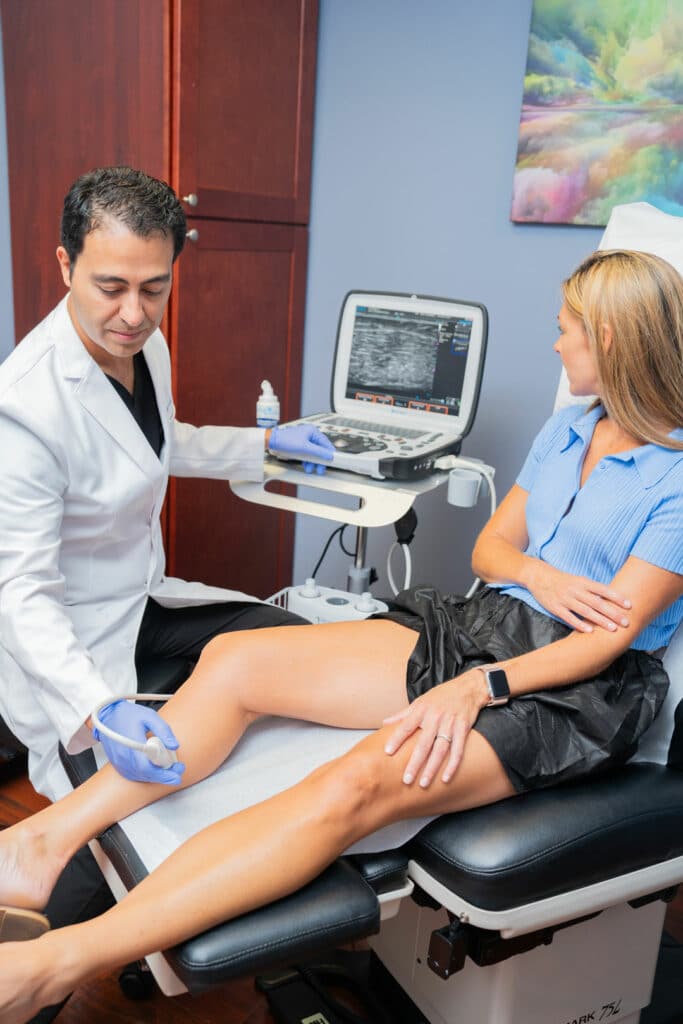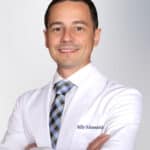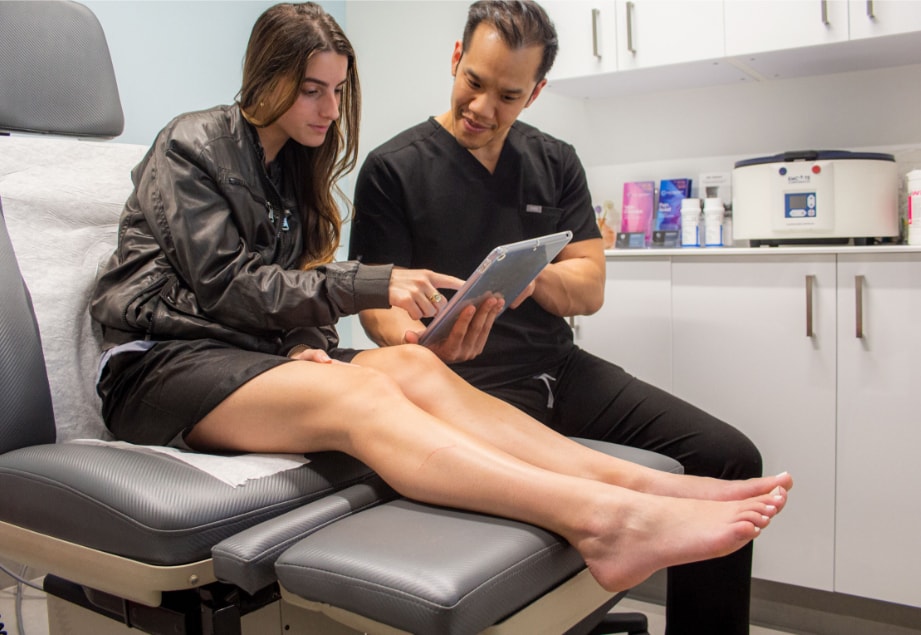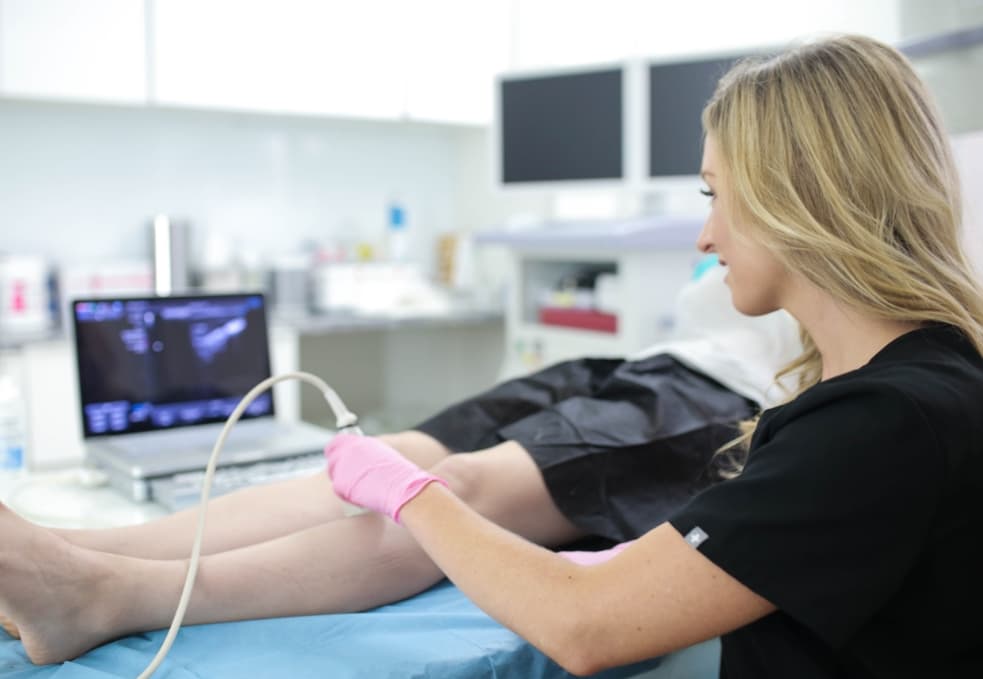What is the main cause of varicose veins?
Varicose veins are swollen, twisted, and bulging veins, mostly found in the legs and feet. Varicose veins are usually caused by a chronic medical condition known as chronic venous insufficiency. In healthy veins, the vein valves act as one-way doors, allowing blood to flow toward the heart but not backward due to gravity. The vein valves facilitate the smooth, one-way flow of deoxygenated blood toward the heart against the force of gravity.
Venous insufficiency is a medical condition where the vein valves collapse or malfunction. Consequently, gravity foresees blood to flow backward and accumulate in the leg veins, eventually leading to vascular dilation. As more blood accumulates in the leg veins, you eventually develop spider veins and varicose veins. Over time, this can cause the veins to become twisted, enlarged, and visible. If you notice varicose veins, you must contact a vein doctor near your location.
Maryland Vein Center is a state-of-the-art vein center specializing in minimally invasive spider vein and varicose vein treatments. Our vein center is dedicated to identifying and treating the root cause of varicose veins, not just the symptoms. Our vein doctors use cutting-edge duplex ultrasound tests to visualize the direction of blood flow in your leg veins and curate a personalized treatment plan. Our vein center is located at 10215 Fernwood Rd, Suite 301, Bethesda — please schedule an appointment for a diagnosis.
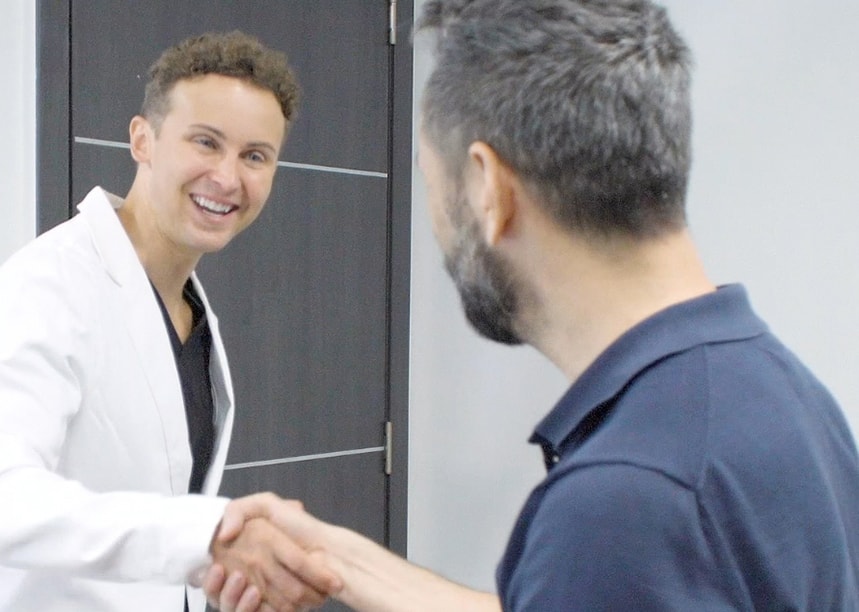
What are the risk factors for varicose veins?
Varicose veins are unsightly and often painful, blue or purple twisty veins found just beneath the skin. Though they can affect both men and women, they are more common in women. It is estimated that up to 40% of women in the United States suffer from varicose veins. The good news is that several factors can increase your risk of developing varicose veins, and by knowing these risk factors, you can take steps to mitigate your risk.
- Age is the number one risk factor for developing varicose veins. As we age, our veins become weaker, and their walls become less elastic, making them more likely to become damaged.
- Weight is also a major risk factor. Studies have shown that the more weight you carry, the more likely you will develop varicose veins.
- Heredity is yet another factor, with family history being a major risk factor. If you have a family history of varicose veins, there is a much higher chance of you developing them as well.
- Pregnancy is a major risk factor for varicose veins. During pregnancy, the uterus can pressure the veins in the legs, making it difficult for them to circulate blood effectively.
- Hormonal changes that occur during menopause can also contribute to varicose veins.
- Occupations that involve standing up for long periods without taking a break can also cause varicose veins. Being inactive and not getting enough exercise can also increase your risk of developing varicose veins.
If you are at higher risk for developing varicose veins due to any of the above factors, there are some steps you can take. Varicose veins can be an uncomfortable source of embarrassment. However, understanding the risk factors and taking steps to reduce them can go a long way toward preventing or reducing the severity of these vein conditions. Below, we describe methods to minimize the risk of varicose veins and spider veins.
How to minimize the risk of developing varicose veins and spider veins?
- Prolonged periods of standing or sitting can cause the blood in the veins to pool, leading to varicose veins. If your job requires you to stand or sit for long periods, take breaks and walk around every 30 minutes to keep the blood moving.
- Wearing compression stockings can help prevent the development of varicose veins and spider veins. These special stockings apply gentle pressure to the legs to keep the blood moving and prevent it from pooling. They are particularly useful for people who stand or sit for long periods or those at a higher risk of developing varicose veins due to other factors, such as pregnancy or a family history of the condition.
- Exercise is another important factor in preventing varicose veins and spider veins. Regular physical activity improves circulation, which can prevent vein disease. Walking, running, and swimming are great forms of exercise for improving circulation in the legs.
- Elevating your legs above the level of your heart can improve circulation and reduce the risk of these conditions. You can also try massaging your legs in a circular motion, starting at the ankles and working your way up, to stimulate blood flow.
- You must consult a vein doctor if you notice any changes in the appearance of your veins or if you experience discomfort or pain in your legs. Early treatment can prevent serious health issues, and your doctor can recommend the best treatment.
In conclusion, there are several steps you can take to minimize the risk of developing varicose veins and spider veins. Maintaining a healthy weight, avoiding prolonged periods of standing or sitting, wearing compression stockings, exercising regularly, and practicing self-care techniques can minimize the risk. There are no definitive techniques to prevent varicose veins, but ongoing care and maintenance can improve blood circulation and reduce the risk. If you notice any changes in your veins or experience discomfort or pain in your legs, please schedule an appointment at a reliable vein center in Maryland.

